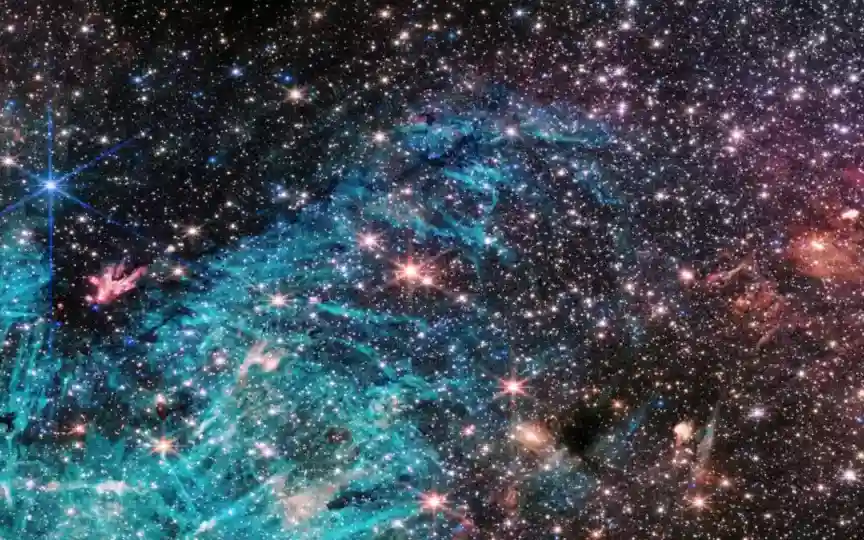Explore the Milky Way with NASA’s James Webb Telescope!
The James Webb Space Telescope, known as the leading space science observatory globally, is aiding scientists in unraveling numerous enigmas within our solar system. By utilizing this advanced telescope, scientists can now explore far-off planets and celestial bodies. A recent image unveiled by the James Webb Space Telescope displays a portion of our galaxy’s densely packed core, revealing unprecedented features that have left astronomers perplexed. Extensive research is currently underway, but no explanations have been discovered thus far.
According to NASA’s blog, the image shows a star-forming region known as Sagittarius C (Sgr C). It is about 300 light-years away from the central supermassive black hole.
Samuel Crowe, principal investigator of the observing team, who studies at the University of Virginia in Charlottesville, says: “This region has never had infrared data with the resolution and sensitivity we got with Webb, so we’re seeing a lot of features here for the first time.” He further added, “Webb reveals an incredible amount of detail, allowing us to study star formation in this kind of environment in a way that was not possible before.”
What are protostars?
According to NASA, about 500,000 stars visible in the image form a group of protostars. These are stars that are still evolving and gaining mass. They emit outflows that look like an arrow in the middle of an infrared dark cloud. At the core of this cluster is a massive protostar more than 30 times the mass of our Sun. NASA explains that the cloud from which the protostars originate is too dense. Therefore, the light from the stars behind cannot reach the James Webb telescope. This makes it look less crowded. Smaller infrared-dark clouds appear in the image as dots, which are like holes in the star field. These are the holes where future stars form.
In addition, Webb’s NIRCam (Near-Infrared Camera) instrument has taken an image of the large-scale radiation from ionized hydrogen surrounding the lower part of the dark cloud. It is cyan in the picture. According to Crowe, this is because young massive stars emit energetic photons. However, the vast extent of the region shown by the James Webb Space Telescope remains unexplained and requires further investigation.




